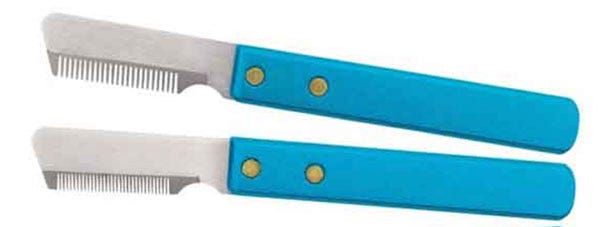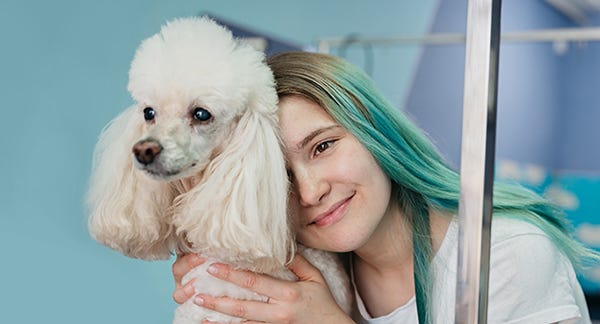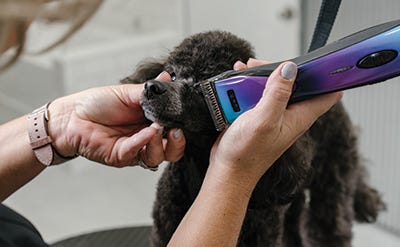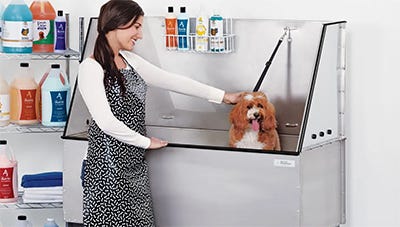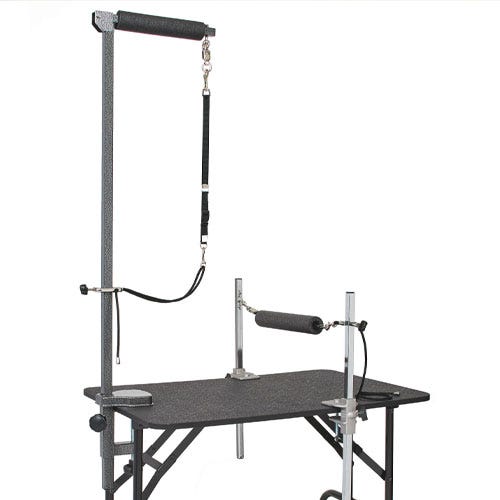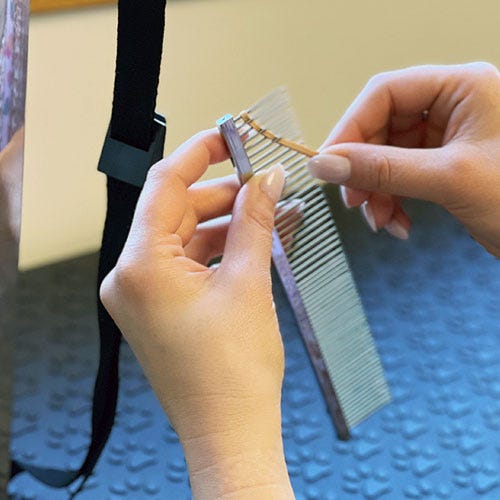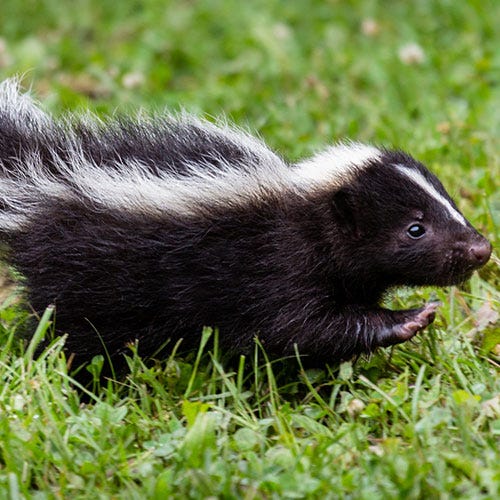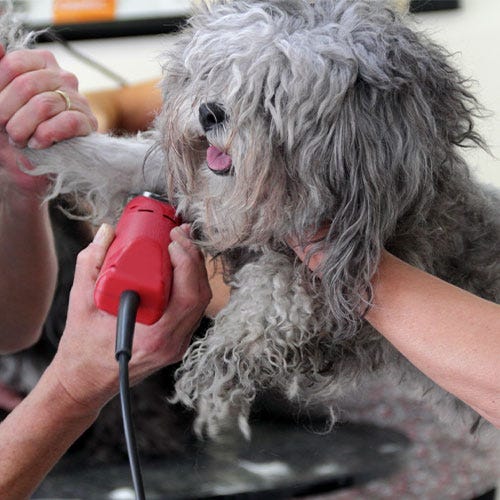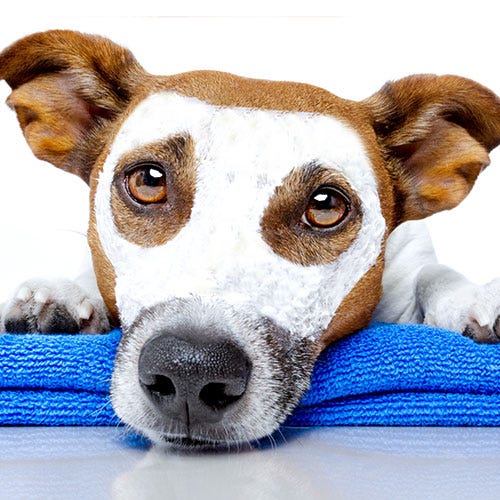Picture this scenario… you are clipping a pet Spaniel with a thick coat, and you realize that you have unwittingly created what looks for all the world like a corduroy jacket on that pup. Usually, it’s not the fault of the blade, the clipper, or even your clipping technique. The problem is that the dog has a thick undercoat.
So, what’s a groomer to do? One choice is to clip the dog shorter, but that is not the best plan. Instead, spend a little time removing that undercoat. This will enable you to achieve a lovely, smooth clip while improving the dog’s skin health at the same time.
Carding is a technique that removes dead undercoat, leaving the harder topcoat intact. By pulling the old, dead undercoat out of the follicles, you can leave that topcoat a bit longer when you clip it, and it will lay flatter and look better when you are done. You will also reduce shedding and encourage healthy new hair to grow. It is most often used on pet terriers and sporting breeds to help maintain good texture.
The goal is to safely remove the dead undercoat without cutting the topcoat. There are a variety of tools designed to help you do this. The Andis deshedding tool works well on medium-length coats and is a great tool to use to begin. It looks like other tools of this type, but it works far better than any other I have tried. Use it on a clean, dry coat, and work with the lay of the fur. You will be amazed at how much undercoat flies out.
For the next step, try carding to pull even more dead coat out.
Here is how:
- There are knives explicitly designed for carding, but you can also try using a fine or medium stripping knife. Make sure the blade is dull before you use it, or it will cut the coat rather than pull it out.
- Lay the tool flat on the dog’s coat and use your non-dominant hand to hold the pet’s skin smooth and taught above the area you are working.
- Tilt the knife to approximately 25% angle and pull it towards you. Work on a small area at a time until hardly any hair comes out with each stroke. (Keeping the blade at a low angle will help catch the dead hair and prevent skin irritation. Check the area frequently to make sure you are not scraping the skin.)
The technique is simple but effective. Although it can be a bit time-consuming, you will find that dogs on a regular grooming schedule will be easier to work on when they return. In addition, their skin and coat will look better, and as a result, your grooming results will improve.
Carding is also helpful on smooth-coated breeds like Pugs, Chihuahua, and such. Even after bathing, conditioning, drying, brushing, and combing, you can often see plenty of thick undercoat still sort of stuck there. The carding technique will encourage that clumpy dead fur to vacate the pet and leave a hard, shiny topcoat behind.
Carding is a great skill to add to your grooming repertoire.
By Daryl Conner, MPS, MCG

